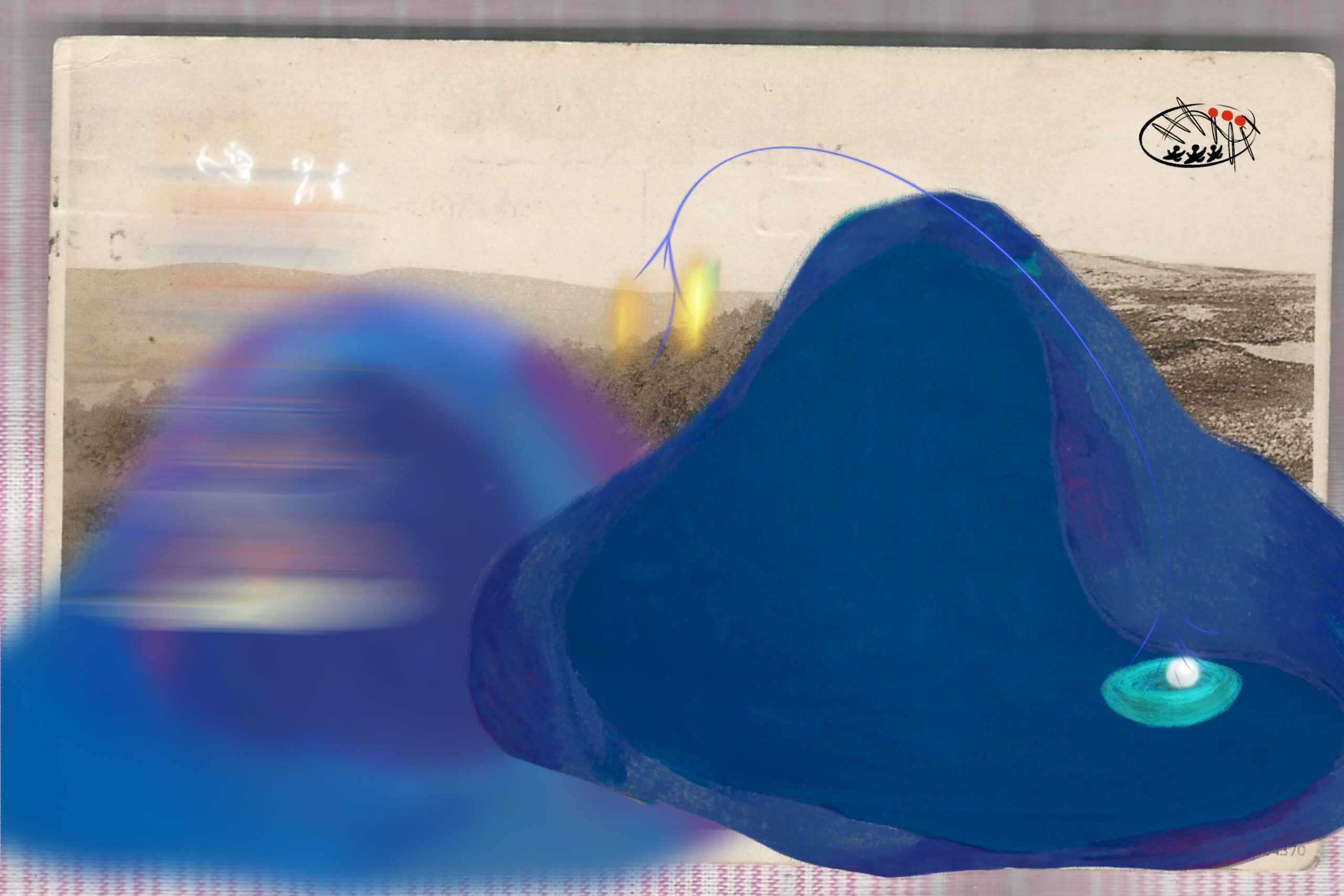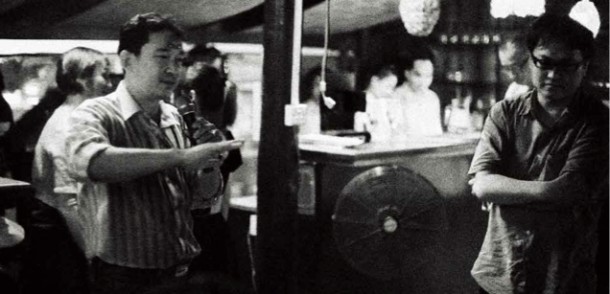GAO SHIMING: 2012, THE END THAT NEVER CAME
| 2013年05月10日 | 发表于 LEAP 19
IN 2012, I thought about the end that never came. This so-called end of the world proved once again that in fact, there is no end to the world.
The world is time and space, and it is eternally flowing and revolving. We are ignorant, lost in the daily grind; we only happen to touch or perceive things by accident. People call these moments deathly boring, reminding us that boredom is a feeling that cannot be relied on. If we are bored, or if we rely on our hopes, we throw ourselves into doing things for the future; otherwise we are entangled in memories, mourning the things of the past. But both the future and the past are things we can rely on. The only thing we cannot rely on is the empty present moment.
It can be a kind of release, losing oneself in this empty present moment. After all, does not art provide relief from boredom in life? At this moment, every living being is performing its own function on its own course, and I am lonely, with nothing to do and nothing restraining me. I am not concerned with the past, the future, or the distant; all I can see is this rogue earth. When one is bored to death, even the four seasons can be forgotten. Is anyone still concerned with the hustle and bustle of the art world? My life has limits, too. How can I rid myself of these endless passions and pains?
It occurred to me in 2012 that I am both a teacher and a student. With regards to “teaching,” I see my responsibilities as thus: guiding souls to change their direction; cultivating common concerns; sharing advice and experience; renewing knowledge; encouraging broadmindedness; and forging integrity. The purpose of education is to lead students to discover themselves through doubt and introspection, as well as to establish the battlefields and shrines inside of us. Critique and reflection can exist because of the internal battlefield; hope and awe can exist because of the internal shrine. And it is because we have critique, reflection, awe, and hope that we can continue forward through repetition and entanglement.
With regards to “learning”: the word “learn” itself carries connotations of consciousness, of becoming aware of the unknown. To learn is to study and behave so that one may achieve awareness. The Qing scholar Duan Yucai said: “After learning, you know your deficiencies; after teaching you know your confusion. When you know your deficiencies, you can strive for self-consciousness; when you know your confusion, you can strive for self-improvement. This is why we say that teaching and learning benefit one another.” Here, the term benefit not only refers to the concord between teacher and student, but also between thought and behavior. A “student” is not only a follower, but also a “companion”; seen this way, the teaching-learning path is both one of becoming aware, and of helping others become aware.
Art is a path that stems from the common evolution of “teaching” and “learning,” a path that encourages us to criticize and experiment continuously. It is through ceaseless criticism that we renew our connection with the world, and through constant experimentation that we open our spiritual spaces and our social imagination.
I thought about curation in 2012. I have been curating now for more than 10 years. My work as a curator has never been limited to organizing exhibitions or promoting artists; curating establishes a unique practice space, and its practice lies in the awakening of perception. Curators work not only with such tangible elements as artists, audiences, galleries, and museums, but also connect more intangible elements such as discourse, the media, the system, and exchange. Together, these intangible and tangible elements constitute the larger cycle of art history, museums, mass media, and ideology. The purpose of writing about curating, as with the act of curating itself, is simply to ask: within this larger cycle, where is the “significance” of art? Where does the “value” of art originate? Where does the “creation” of art and artworks begin and end? Why are artistic activities referred to by the terms “produce” and “practice”?
In brief, I believe that curation is not a service; rather, it is accumulation, mobilization, criticism, and creation. In my opinion, a curator’s work consists of three levels of practice: first, to use artworks to construct an “argument”; second, to work with artists to construct a critical and productive “context”; third, to through exhibition make a “proposal” to both society and the times. There is a kind of historical and political power inherent in curation when one can make such a proposal, a power to generate imagination of the future and the transformation of life.
I again considered saying goodbye to the art world in 2012. What we call “the art world” seemed so remote to me; what I once regarded as my career became the river I would never step into again.
Time after time I have decided to give up art as a profession. In 1997, in 1999, in 2006… but I have never really left. After 10 years of entanglements, however, this time my farewell is neither born of disappointment with the art world, nor of yet another spiritual crisis. This time, the feeling goes beyond the confusion and bewilderment I have already gradually become accustomed to.
I have said before that bewilderment is the basic state of both life and art. Art is not a path that leads to “solution,” but one that leads to “confusion”; confusion is born of reflection, and reflection is art’s most essential spirit. Art should constantly shake up the hard earth under our feet; just as only life itself can teach you how to create, an imaginative mind can only be nurtured on loose soil. In the journey that is art, we return again and again to that “fragile and roaring center which can never be reached by form,” to reconstruct our perceptions and reinvent our languages. As Antonin Artaud said, this “center” is life. And in this ocean of life, anyone who chooses art as a career is learning to mobilize their imagination and power of thought to break through the illusions established by art and return to everyday understandings, to bodily experiences, to perceiving society with their spirit, and connecting with others through emotion. At the same time, our perceptions are honed through life, and our powers of self-criticism are strengthened through others.
In 2012, I realized the creation of an artist requires years of development, a lifelong journey— not plans or their realization. The spirit of art does not only exist for the production of artworks; what is more important is “art for life.” From a wider perspective, art as I understand it is for those bodies exhausted by contemporary production and consumption, for those people defeated by the trivial affairs of daily life. Art should excavate anew their emotion and intelligence, as well as re-inspire their sense of initiative and their courage to criticize and act, thereby reclaiming humanity’s power of self-expression and self-renewal, and reestablishing the social moment of thought and spirit.
Perhaps these moments are art, whether they occur inside the art world or outside it. These “artistic moments” occur in everyday life: those moments in our lifetime which arouse our sensibilities, when that which we are accustomed to falls away, when the earth beneath our feet begins shaking, when the self emerges from the endless tangles of life, when the ineffable mysteries of the world shine out again and again— in these moments, our perception, our critical power and creativity, as well as the intelligence and capacity for emotion hidden in every one of us, will give off a resplendent light. (Translation by Sarah Stanton)




